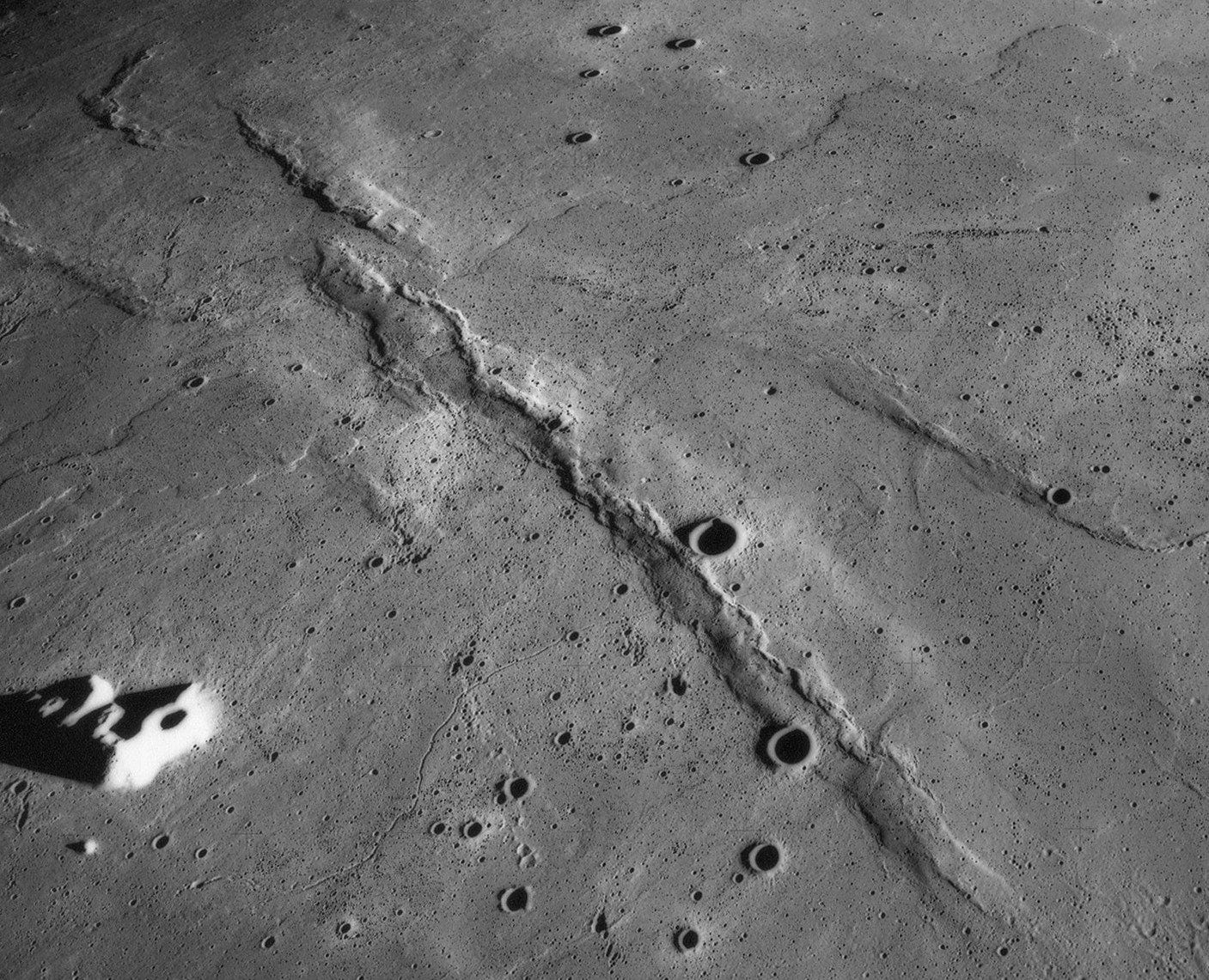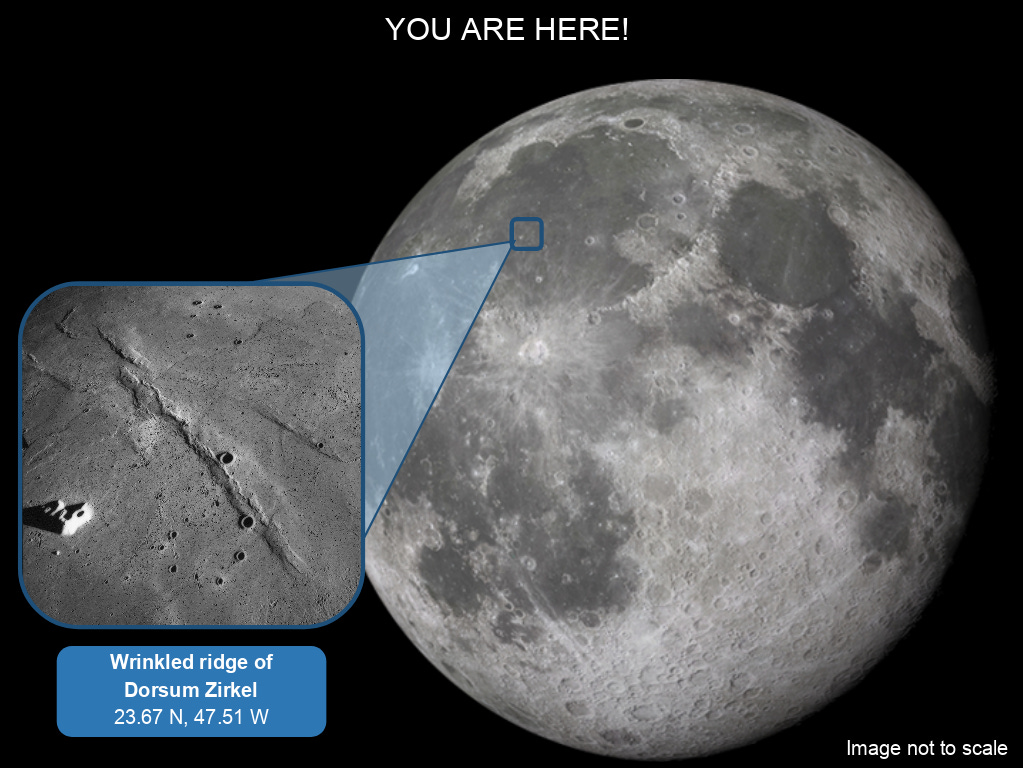The Moon has wrinkles! - Dorsum Zirkel
Here's a long-running wrinkled ridge on the Moon called Dorsum Zirkel, in the vast lava plains of Mare Imbrium.

The Moon has many wrinkled features (Dorsa) across its surface. Wrinkles are tectonic features formed by compressive stresses on the lunar surface.
The dark regions of the Moon — the Maria (plural for Mare) — were once seas filled with lava, solidified to form vast plains over millions of years. Their primary component is basalt, which is denser than the crust below it. Multiple layers of basaltic lava piling up causes the crust to sink and compress.
Compressive stresses due to layers of lava or mountain ranges can be large scale (hundreds of kilometers of mare regions) or small scale i.e. compression due to nearby craters. As different points in a region get compressed and folded, wrinkled ridges develop. More the number of ridges or their shape complexity, greater the stress the area has been through. Wrinkled ridges are thus a great way to assess the tectonic history of a region.
I've previously covered two features that contain wrinkled ridges.
- The large, lava-flooded Letronne crater has wrinkles inside it.
- Wrinkles besides a ghost crater

